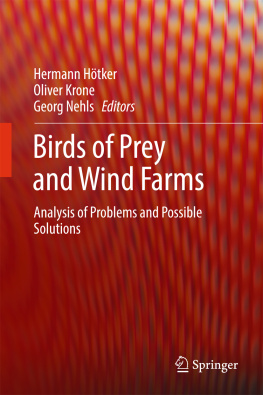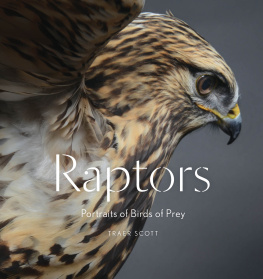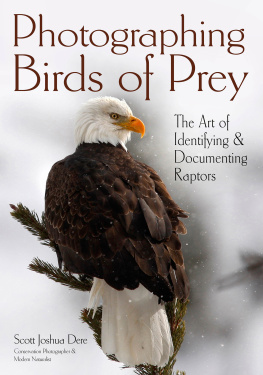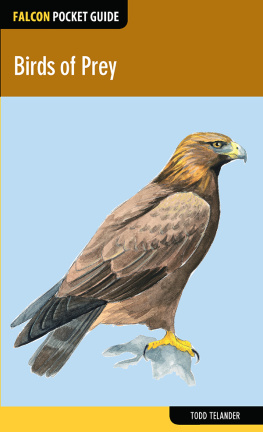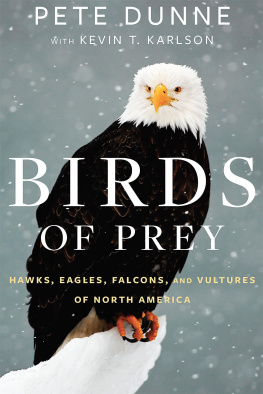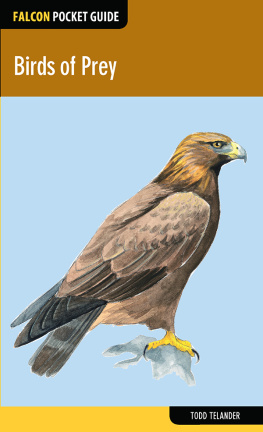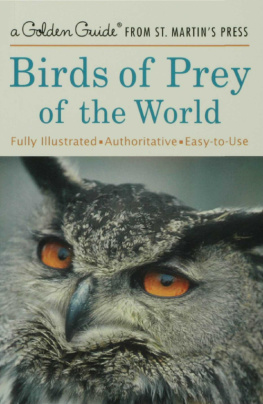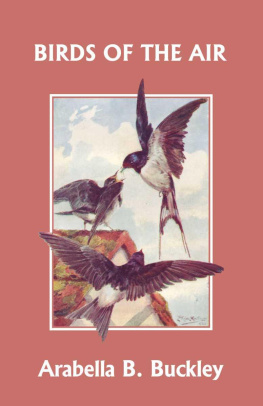1.1 Project Background
The project was carried out against the backdrop of a further development of the use of renewable sources of energy which was (Federal Ministry for the Environment, Nature Conservation and Nuclear Safety (BMU) , 30.6.2011). After the USA, Germany occupies a leading position in wind energy use. Further development of onshore wind energy use in Germany will mainly be carried out within areas which were already identified to be suitable for wind farms, although additional areas may be of regional importance as expected for Brandenburg and other federal states. Increases in installed capacity are planned to be mainly achieved through construction of larger wind turbines and increased hub heights.
Especially in the US but as well in Europe, concerns that wind turbines may have impacts on wildlife and birds in particular were already expressed in the early stages of wind energy use. In the US these concerns were mainly fuelled by experiences with the first large wind farm in the Altamont Pass in California, where hundreds of birds of prey were killed annually since its erection with initially nearly 5000 wind turbines. This also affects protected species like the golden eagles ( Aquila chrysaetos ) (Orloff and Flannery ). Especially affected are red kites ( Milvus milvus ) with 190 reported collisions, a species endemic to Europe, with Germany hosting more than half of the breeding population, as well as the white-tailed sea eagle ( Haliaeetus albicilla ) with 78 reported collisions. Both of these species are listed in Annex I of the EC Birds directive.
To date, possibilities to reduce the risks by means of structural measures or choice of suitable locations are limited, as little is known about the circumstances of collisions (Drewitt and Langston ).
Potential risks for birds of prey and other large bird species are a major controversial issue in the designation of new wind turbine sites. The Lower Saxony County Association for example recommends to observe distances of up to several kilometres from nest sites of different bird of prey species in the designation of wind farm sites (Niederschsicher Landkreistag (Lower Saxony County Association) ). Consistent implementation of such recommendations would considerably reduce onshore space available for wind energy use.
Several court decisions in Bavaria did not approve the construction of wind turbines, because these would have been located too close to breeding sites of the Montagus harrier (see for example Administrative Court Wrzburg, W 5 K 04.291; Administrative Court Ansbach AN 18 K 03.02016, A). In the Hellweg Brde in North Rhine-Westphalia the Montagus harrier plays a major role in conflicts between wind energy use and nature conservation in the designation of Special Protection Areas under the Birds Directive.
Although bird of prey collisions with wind turbines have long been reported, the reasons for the frequent collisions of these diurnal and skilful flyers were largely unknown. It was assumed that birds of prey showed little fear of solid structures like wind turbines and therefore stayed longer than other species in the rotor swept area. It could be expected that collisions with wind turbines did not occur due to restricted perception of the turbines as likely for birds migrating at night, but due to species-specific behaviours. Therefore, understanding of these behaviours was of major importance in the development of avoidance measures.
Sensory physiological investigations have shown though that fast moving monochromatic rotor blades may not be perceived as a potential threat by birds of prey in the close-up area (Hodos et al. ).
No studies on the reasons of collisions or other conflicts of birds of prey were available from Germany. Several studies in other European countries and the US mainly dealt with the determination of collision rates and identification of problematic locations for wind turbines (overview in: Htker et al. ).
In the beginning of the project, VHF transmitters, well-proven in various studies, were used in bird of prey monitoring, which can be tracked from mobile ground stations. GPS satellite transmitters were available in the second phase of the project, which regularly transmit locations to a satellite where data can be retrieved at regular intervals.
1.2 Scope
Aim of the study was to investigate the reasons for the higher collision rates of birds of prey in comparison to other species and to analyse additional conflicts between birds of prey and a further development of wind energy use, to assess the importance of these conflicts for the conservation of endangered species and to develop solutions for a reduction or avoidance of conflicts.
The results were to be presented in form of a guideline for development of wind turbines in breeding areas of sensitive bird of prey species. Specific suggestions on how to reduce collision risk through changes in the surrounding area of wind turbines, marking of turbine blades or selection of the wind turbine location were to be drawn up. The effects of these suggestions were to be verified in field studies.
To achieve this, the risk for birds of prey within existing wind farms needed to be determined in behavioural observations. Hunting behaviour, flight height and evasive movements of three relevant species were to be investigated with the additional support of telemetric methods. The question whether the collision risk changes with larger wind turbines and increasing hub height was an important aspect. Investigations were mainly carried out for red kite, white-tailed sea eagle and Montagus harrier. These species were chosen, because red kites and white-tailed sea eagles are among the most frequent collision victims in comparison to the size of their respective populations. The Montagus harrier as a highly endangered species throughout Europe was proposed as a further species, as this species was frequently rated as sensitive towards wind turbines and breeding and foraging habitats of Montagus harriers, large-scale open agricultural landscapes, are at the same time especially suitable for wind energy use. Many wind farms are located in the north-west of Schleswig-Holstein and the Hellweg Brde in North Rhine-Westphalia, the main areas of distribution of the Montagus harrier.
Detailed questions regarding the single species can be found in the next chapter.
References
Band W, Madders M, Whitfield DP (2007) Developing field and analytical methods to assess avian collision risk at wind farms. In: de Lucas M, Janss G, Ferrer M (eds) Birds and Wind Power. Quercus, Madrid, p 259275.
Bevanger K, Berntsen F, Clausen S, Dahl EL, Flagstad , Follestad A, Halley D, Hanssen FE, Hoel PL, Johnsen L, Kvaly P, May R, Nygrd T, Pedersen HC, Reitan O, Steinheim Y, Vang R (2009) Pre- and post-construction studies of conflicts between birds and wind turbines in coastal Norway (BirdWind). Progress Report 2009, NINA Report 505, 70 pp.
Bundesministerium fr Umwelt, Naturschutz und Reaktorsicherheit (BMU) (2004) Themenpapier Windenergie. Bundesministerium fr Umwelt, Naturschutz und Reaktorsicherheit, Art 2122, Berlin.
Bundesministerium fr Umwelt, Naturschutz und Reaktorsicherheit (BMU) (2010) Umweltbericht 2010. Bundesministerium fr Umwelt, Naturschutz und Reaktorsicherheit, Berlin.

